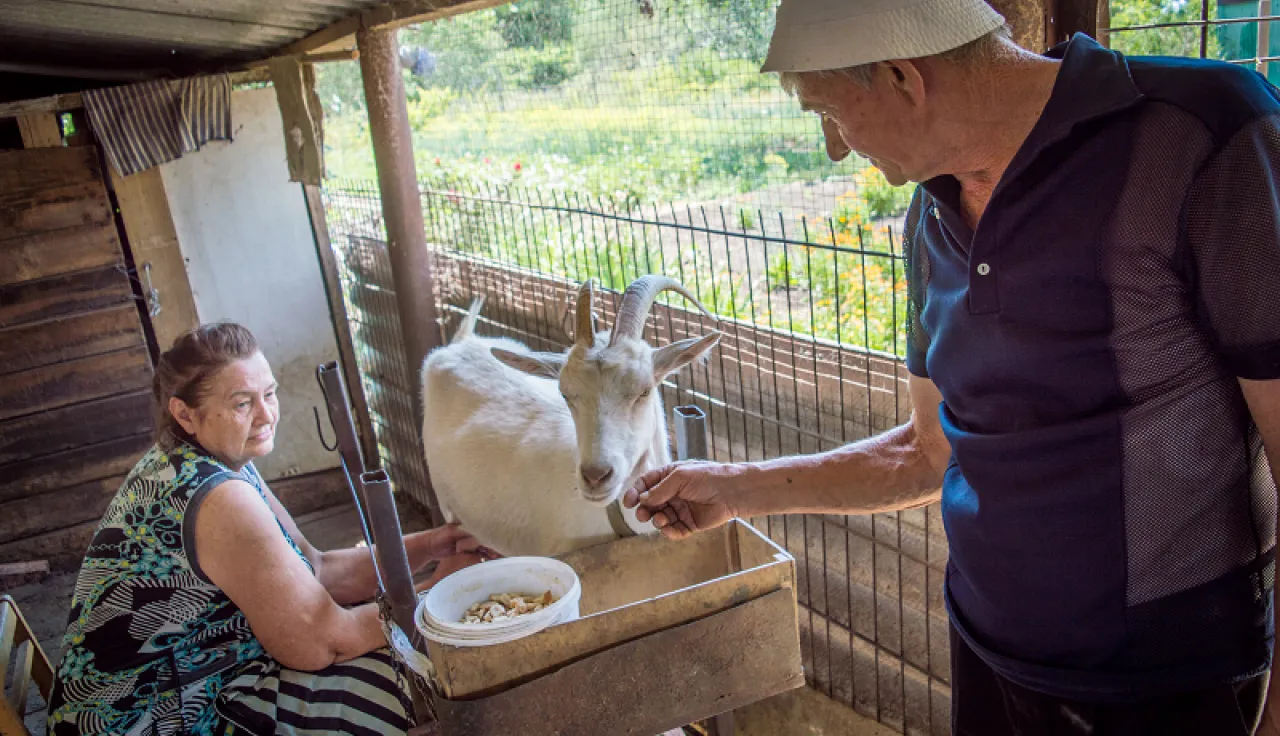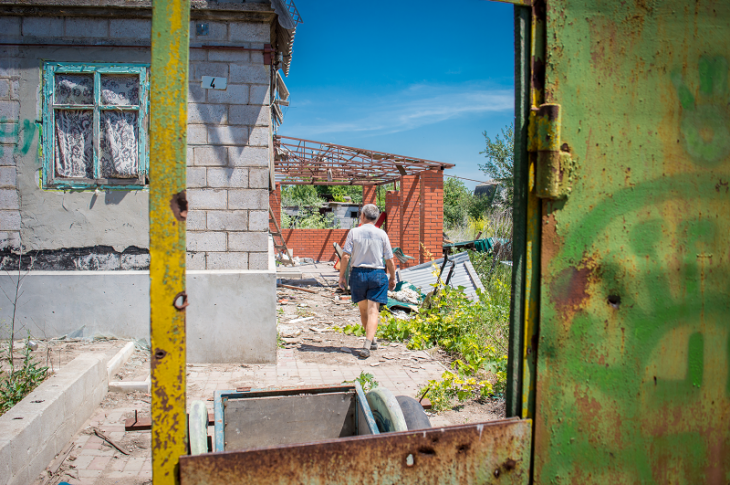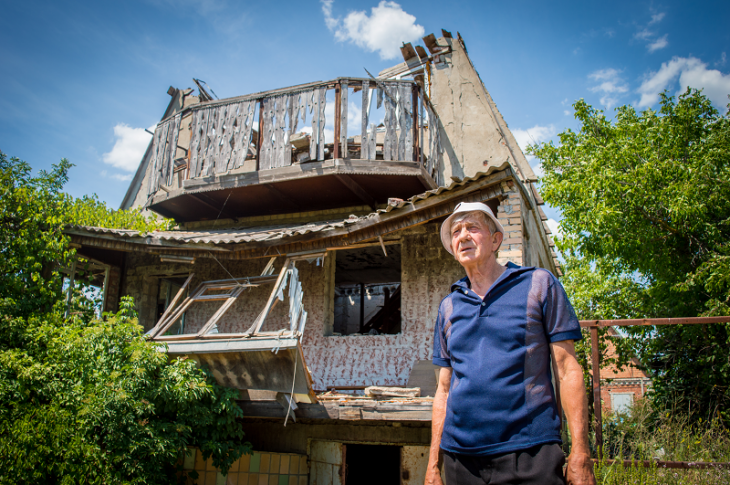Don't forget us: Seven families in Vodiane implore the world

Of the hundreds of families that once called Vodiane home, only seven now inhabit this tiny village that was known as Mariupol's favourite vacation spot. But those times are long gone.
Isolated and alone, Vodiane's 13 residents rejoice as they receive assistance material from the ICRC. Before we leave, they tell us we need to come back more often - "even if just for a visit".
After two hours at a checkpoint, the ICRC convoy finally reaches the village of Vodiane.
The settings could easily mimic a scene from a post-apocalyptic movie: houses are destroyed and abandoned, graffiti covers the yellowing walls and a piercing silence abounds. Somehow, the lushness of summer makes the grey hopelessness of Vodiane less depressing.
As our cars come to a stop, villagers begin to slowly gather. When the conflict started, there were about 300 families living in Vodiane. Only seven remain now. All others made alternative arrangements and left. Vodiane is a priority village for the ICRC and assistance is provided to all residents without restrictions; there are only 13 of them left behind.

A yard of a damaged house in the village of Vodiane. CC BY-NC-ND / ICRC/ Y. Nosenko
Although Mariupol, a city inhabited by half-a-million people, is only 20 kilometres away, getting to Vodiane is not easy.
After almost everybody left the village in 2014, the military banned entry and exit, even restricting access for many humanitarian organizations. Any arrival of outsiders is thus a major event for the remaining villagers. Even the weather gods offer a very narrow window to visit with only the dry summer providing a pass to enter. In winter, the dirt road is covered with snow that is rarely cleared. During spring and fall, it rains so heavily that even trucks cannot get through.
Making use of the favourable weather conditions to deliver humanitarian aid to the village, the ICRC has brought in farm animals, agricultural fibre, protective mesh, battery lanterns and fire extinguishers for the villagers.
“Oh, my little ones!” - babushka Sophia rejoices as her new lambs jump towards her. Sophia’s neighbour Rodion sadly looks on. Wounded in a recent shelling, he no longer has the strength to rear animals. Rodion says he still can’t get used to the fact that the village has turned into a ghost town.
We start to unload the cars. Each family receives 125 kilograms of wheat and maize as poultry feed, a roll of agricultural fiber and a protective net. Three families now have the resources to raise sheep. Nikolay Ivanovich looks happiest of them all.
“Honestly, I did not think that you would bring me a milking machine,” he exults. “My wife’s hands are curled due to arthritis and it’s hard for her to milk goats. She cries every morning and evening when she has to do it,” he tells us, leading the way to his tiny animal farm.
As we walk with Nikolay, it’s hard not to think of the people who once lived in Vodiane. The houses they left behind are large and sturdy, clearly built to last a long happy life. But, they stand empty now.

Nikolay Ivanovich showing around the village of Vodiane. CC BY-NC-ND / ICRC/ Y. Nosenko
When we finally enter Nikolay’s farm, everything suddenly seems normal – goats are bleating, kittens are meowing and a dog is relentlessly barking. “Here they are… my friends,” says Nikolay. Misha, the huge goat, is surrounded by 18 other goats.
“Before the conflict, many people from Mariupol would spend their summer vacations here. They would bring their children, enjoy fresh air and buy organic farm products. But all we now hear are blazing guns and constant shelling. Was all of this necessary? After all, isn’t there enough space on earth for everybody?” Nikolay grows quiet.
On the way back, we pass by the pond. If you look up Vodiane online, pictures of the pond pop up first. This is not surprising because when translated from Ukrainian, Vodiane means “watering”. But the pond was built by the villager just before the conflict. It’s now overgrown with reeds, the water is a stagnating green and geese and ducks are its only infrequent visitors.
“Please come again, come more often, even just to visit,” the residents of Vodiane tell us as we get ready for the return journey. Each time they get a visitor, these remaining 13 of Vodiane feel like they continue to matter. And that Vodiane is still alive.



